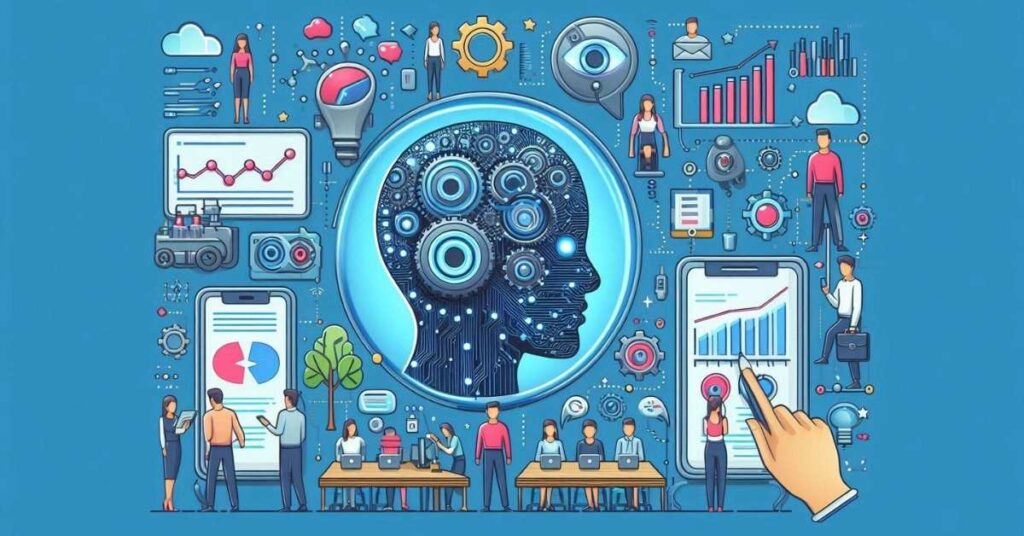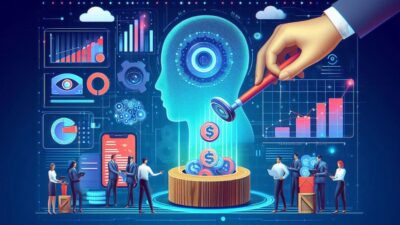
Yet, as businesses scale, delivering truly personalized experiences becomes increasingly difficult. This is where artificial intelligence bridges the gap, enabling companies to maintain the intimacy of a boutique shop while operating at enterprise scale. AI personalization customer outreach is no longer a luxury; it’s what separates industry leaders from the competition. By analyzing behavior patterns, predicting needs, and automating tailored engagements, AI allows businesses to cut through the noise with relevance that drives measurable results higher open rates, more conversions, and lasting customer loyalty.
The Science Behind AI Personalization Customer
Dynamic Content Customization
Traditional segmentation groups customers into broad categories, but AI goes further by tailoring every element of outreach in real time. Machine learning algorithms analyze thousands of data points—past purchases, browsing behavior, email engagement, and even sentiment from customer service interactions—to determine the optimal message for each individual. For example, an e-commerce brand using AI might send one customer a discount on running shoes based on their search history, while another receives a recommendation for yoga mats because their fitness app data suggests a recent interest in mindfulness. This level of specificity, powered by tools like Dynamic Yield or **Adobe Target**, can lift conversion rates by 20-35% compared to generic campaigns.
Predictive Timing and Channel Optimization
Even the most compelling message falls flat if delivered at the wrong time or through the wrong medium. AI eliminates this guesswork by predicting when a customer is most likely to engage. For instance:
- Retail: An AI model might detect that a particular shopper consistently opens emails at 7:30 PM and schedules sends accordingly.
- B2B: Outreach platforms like Salesloft use engagement data to determine whether a prospect responds better to LinkedIn messages or phone calls.
By aligning outreach with natural behavior patterns, businesses see 50% higher open rates and **3x more responses**.
Hyper-Personalized Product Recommendations
Static recommendation engines (e.g., “Customers who bought this also bought…”) are being replaced by AI systems that contextualize suggestions based on real-time intent. Amazon’s recommendation engine, responsible for **35% of its revenue**, uses deep learning to adjust suggestions not just by purchase history but by factors like:
- Current cart contents
- Time spent hovering over certain products
- Comparisons with similar users’ journeys
Smaller brands leveraging AI-powered Shopify apps report 15-25% increases in average order value from similarly sophisticated approaches.
Scaling Personalization Without Losing the Human Touch
AI-Enhanced Email Campaigns That Feel Handwritten
Tools like Phrasee and Persado use natural language generation (NLG) to craft subject lines and body copy that mirror a brand’s voice while optimizing for emotional triggers. A travel company using these tools might generate:
- For a luxury traveler: “Your private villa in Bali is waiting—early-bird rates end soon.”
- For a budget backpacker: “Hostel deals in Bali: Adventure for less!”
These AI-generated variations outperform human-written copy by **10-30% in A/B tests**.
Conversational AI for 1:1 Engagement at Scale
Chatbots and voice assistants have evolved beyond scripted responses. Modern systems like Salesix.ai’s Agentic AI use sentiment analysis to adjust tone in real time:
- If a customer seems frustrated, the AI adopts a more empathetic tone.
- If they’re comparison-shopping, it highlights competitive differentiators.
This results in 40% higher customer satisfaction scores while handling 80% of routine inquiries without human intervention.
Personalized Video Messaging
Platforms like Vidyard and Wistia integrate AI to customize video content dynamically. A sales rep might record a single base video, while AI inserts personalized:
- Name overlays
- Product images relevant to the viewer
- Localized pricing
Early adopters report 5x more engagement than static videos.
Industries Winning with AI-Personalized Outreach
| Industry | Use Case | Results |
| E-commerce | AI-generated product discovery emails | 28% higher click-through rates |
| Financial Services | Tailored loan/credit card offers | 2x more applications approved |
| Healthcare | Personalized appointment reminders | 45% reduction in no-shows |
| SaaS | Behavior-triggered onboarding emails | 30% faster time-to-value |
Implementation: How to Get Started
- Audit Your Data
- Consolidate customer data from CRM, email, web analytics, and support tickets.
- Cleanse duplicates and outdated records (AI is only as good as its inputs).
- Choose the Right Tools
- Small businesses: Start with AI-powered email platforms like Mailchimp’s Predictive Demographics.
- Enterprises: Invest in omnichannel solutions like Salesforce Marketing Cloud AI.
- Test and Refine
- Run A/B tests comparing AI-generated vs. traditional campaigns.
- Let machine learning optimize send times, messaging, and channels over 2-3 months.
Where AI Personalization Is Headed
Emerging technologies like generative AI (ChatGPT, DALL-E) will soon allow brands to create entirely unique content for each customer—from custom articles to AI-designed product mockups. Meanwhile, emotion-sensing AI (analyzing vocal tone or facial expressions via video calls) will enable even deeper personalization in real-time sales conversations.
Personalization at Scale Is No Longer Optional
Customers now judge brands by their ability to anticipate needs and deliver relevant experiences. AI makes this possible without sacrificing efficiency. The businesses that thrive will be those leveraging AI not just to automate outreach, but to humanize it at scale transforming impersonal blasts into valued conversations.




